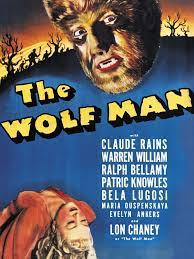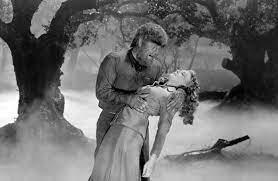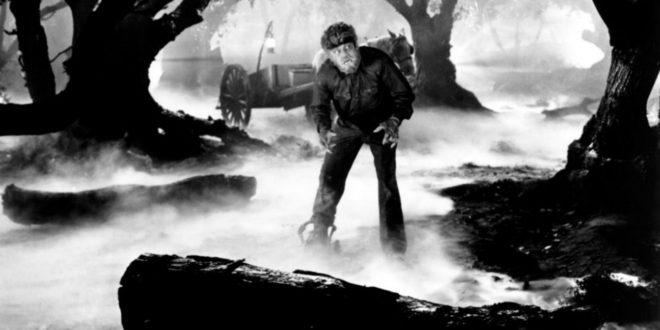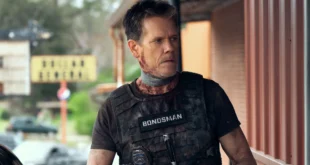“Even a man who is pure in heart and says his prayers by night may become a wolf when the wolf bane blooms, and the autumn moon is bright.”
That’s the verse we hear over and over again in The Wolf Man. In 1941, Universal Pictures added a werewolf to its lineage of monsters, and it changed creature features and special effects forever. So chain yourself up under the full moon and let’s go for a ride, looking back at why The Wolf Man has such a lasting impact on the genre eighty years later.
The Wolf Man was written by the legendary Curt Siodmak (I Walked With A Zombie 1943) and directed by George Waggner (Horror Island 1941). Siodmak had a hand in the Invisible Man sequels, so he was already familiar with the universal monster formula at the time. This film stars Lon Chaney, Jr. (Frankenstein Meets The Wolf Man 1943) as Larry Talbot, a man who fears being turned into a werewolf after being bitten by a lycanthrope (Bela Lugosi: Dracula 1931). Talbot comes across the mother of the man who bit him (Maria Ouspenskaya: Frankenstein Meets The Wolf Man 1943), and she can see the mark of the werewolf curse on his hand.

The inner turmoil of Talbot is what sets The Wolf Man apart from the other monster movies in this age. Talbot was just a normal man, interested in pursuing his romantic charge and buckling down on his potential. This wolf curse sends him spinning out of control as he faces the age old question, “Is death worse than bad quality of life?” He tries to chain himself during the full moon until he can figure out how to cure the curse, even while no one around him believes that anything is wrong with him. Bodies start to pile up in the creepy woods nearby, and Talbot is left with the torment of the sins of his hairy altar ego. He mentally degenerates every time he transforms, leaving him as broken on the inside as he is on the outside. Most monsters at this time were simply vessels of destruction, so to have one like Talbot, a man with conscience who didn’t want to be evil, gave us an empathetic layer of depth.

Speaking of the transformations, the incomparable Jack Pierce (Frankenstein 1931) did a wonderful make-up job here. Pierce truly stands as the man behind the monsters for Universal Pictures, crafting a brilliant barrage of them in the 1930s and 1940s. This transformation sequence is the standard bearer in werewolf horror, and The Wolf Man in general is what spawned all the famous tropes of this sub-genre for decades to come. From An American Werewolf in London (our retro review) to Silver Bullet (our retro review) to Ginger Snaps (our retro review), a lot of these famously ferocious films wouldn’t have become feral if not for The Wolf Man.
 PopHorror Let's Get Scared
PopHorror Let's Get Scared




